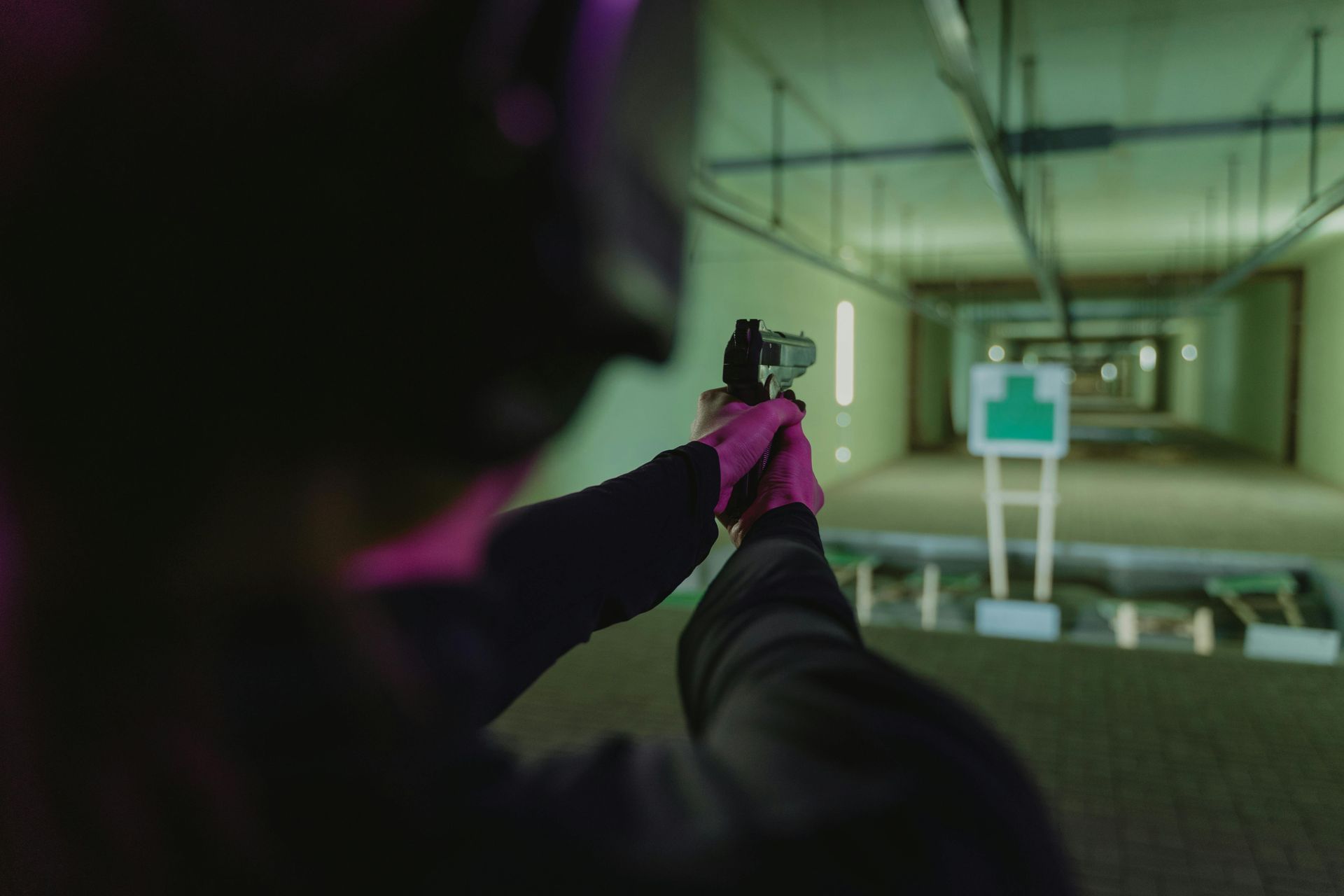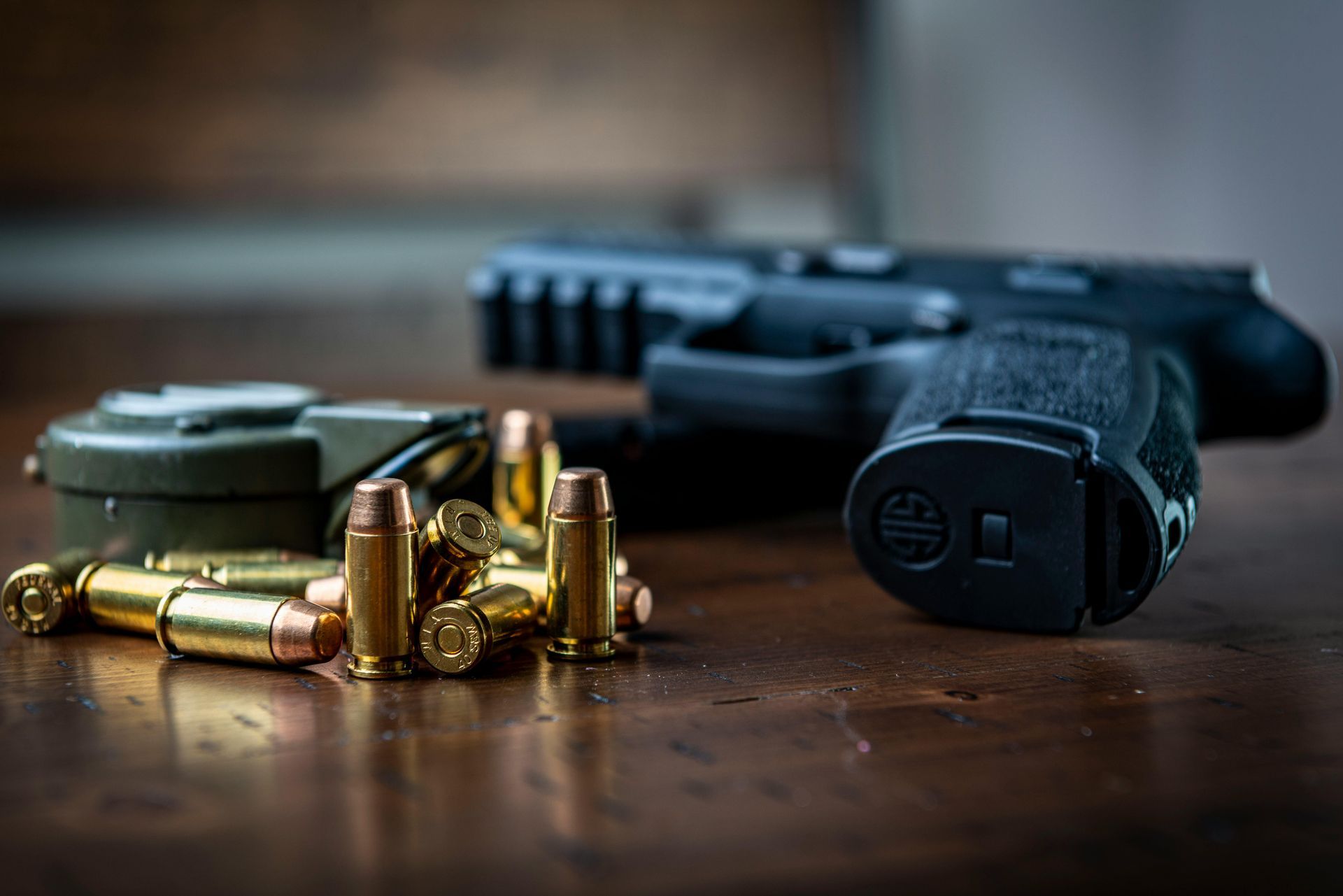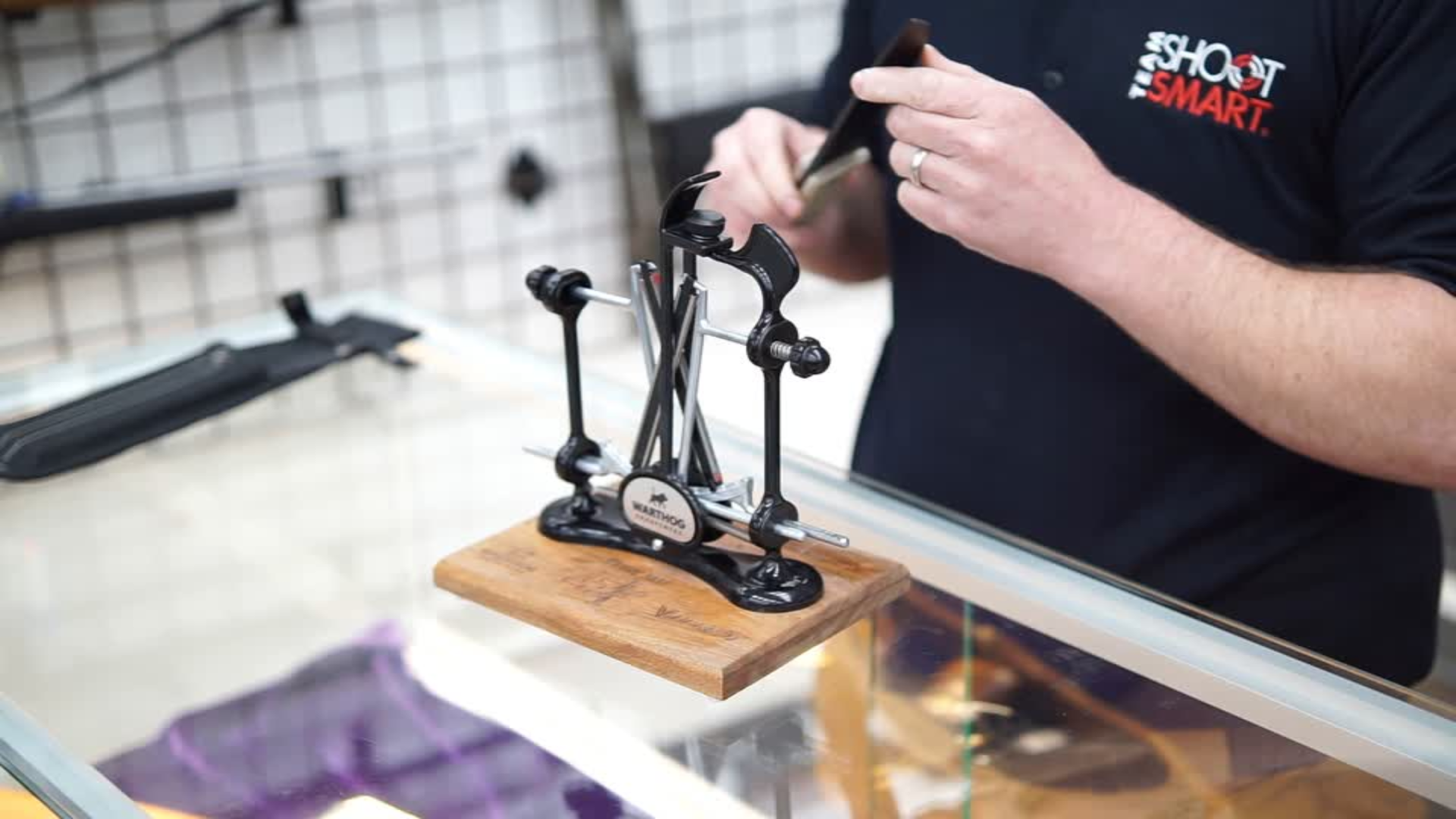Shooting in Self-Defense: Mental Prep
Originally published by Range365, Written By Sara Ahrens
on April 26, 2016 - read the original article here.
“Self-defense situations typically cause a lot of mental stress, which can negatively affect your reaction. That's why training is so crucial.
Over the course of my law enforcement career I was involved in and responded to a lot of violent incidents. Many of them caused an acute stress reaction. I never experienced exactly the same set of physical, mental and emotional responses to these high-risk situations, but I always experienced some combination of them.
For many years I convinced myself that, based on past reactions, I knew how I would respond to critical situations. But the truth is that I didn’t, and the more incidents I had the more I realized how unpredictable stress is on our minds and bodies. I eventually came to realize that by convincing myself that I could control reactions to stress, I was actually making them worse.
That’s why it’s imperative for anyone carrying a concealed firearm for self-defense to understand that a violent encounter is unpredictable. This unpredictability impacts our actions, reactions, and thought process. Regardless of how much mental preparation and visualization we employ to ensure we will react a certain way, there is no guarantee that we will react the way we want to. I learned first-hand that there are many thoughts, feelings, fears, and insecurities that lurk just below the surface, and they may come bubbling up in a life-threatening event.
Thoughts at the Wrong Time
Some of the thoughts and beliefs that can come into play during a self-defense situation may center around topics you didn’t even know you are struggling with, such as:
- Religious convictions / Morality
- Liability
- Injury
- Issues of trust with the police and community
- Insecurities about marksmanship skills
- Fear of perception and judgment for shooting someone of a different race; or is older, younger, female, or pregnant; or who has a different sexual orientation
- Fear over a lack of understanding of deadly force case law
- Thoughts about the impact of a shooting on your family
- Fear of death
- Fear of being perceived as either cowardly or trigger-happy
These thoughts can arise out of nowhere. If you focus on resolving these issues during a critical incident, your mind is likely to be clogged with information that will delay your response to the threat.
I also learned that, in addition to these thoughts, during a critical incident there is a constant stream of information coming into the consciousness. It is a constant process of reading every body movement and micro-expression to determine the threat level. The mind and the senses become overwhelmed quickly. The good news is there is a way to control this and maintain focus.
A Brush with Death
My first brush with a life-or-death situation occurred when I responded to a domestic battery incident. I recognized I had to make an arrest on a man who challenged me to try. I tried reasoning with him to no avail. And at one point he walked past me, bumping my shoulder with his and screamed some profane comment to me… I immediately felt my right leg start to shake. I then got on the radio and heard my voice crack as I asked for back up to “hurry.” This immediately led to negative self-talk regarding my unacceptable level of fear. I was trying to get a grip, but I couldn’t…I didn’t know what was going on or how to stop it. My mouth became dry, my heart pounded and everything seemed to be going in slow motion and, at the same time, taking forever.
Eventually my backup arrived, but his presence further escalated the situation. We pulled out our pepper spray and the suspect pulled out a folding knife. The suspect came at me with the knife, and I watched the rest of the incident as if from above. I saw a couch preventing me from backing away from the suspect. I heard myself tell the suspect multiple times to drop the knife, and when he didn’t and I could no longer back up, I fired one round into his abdomen. I could not hear the shot being fired.
The suspect fell to the ground, and I was confused. I had never shot a living thing before and expected it to be gruesome, but it wasn’t. I wasn’t even sure if I had hit him. Still trying to comprehend what had just happened, my mind went blank on my responsibilities as a police officer and as a human being. I couldn’t remember that I was supposed to handcuff him and call for a supervisor and an ambulance. Fortunately I had a partner whose brain wasn’t as scrambled as mine, and he followed through.
Then, as soon as officers began to arrive on scene, I had a very strong urge to laugh…I mean really laugh. I knew it was inappropriate, and I held it in, but that deeply disturbed me for years. I am not callous and I didn’t think the situation was funny, yet I was fighting back laughter as if my life and career depended on it… and maybe it did! My reaction was likely the result of stress and surviving the encounter. I felt euphoric, though that was short-lived.
How to Always Be Ready: The Five Steps
As a police and civilian firearms trainer, one of the core aspects of my training is always an introduction to the concept of mindset and visualization. It is a concept that I’ve used as an athlete and police officer. It is a mental preparation exercise that can be employed before an experience occurs, or after. Often we think we know how we would respond in a life or death situation, but the truth is, we don’t.
Mindset and visualization alone will not completely assuage reactions to stress, though. There are steps that we can take to prepare us for life-or-death situations and help us focus on the right things at the right times. When I train others with firearms, I always reinforce several points, which include the following:
1. Focus on winning and survival now, before any encounter occurs.
Instead of getting caught up in trying to mentally prepare yourself for a wide variety of potential encounters, it might be best to take what has been discovered in the area of sports psychology and apply those lessons.
You should convince yourself that you are going to win all encounters. This is mindset and visualization and they are critical. You should visualize winning an encounter at all costs. But all of these thoughts should happen before the encounter. Once you find yourself in a violent encounter however, you should resist the temptation of focusing on the outcome. A forward focus creates additional pressure and a loss of awareness of what is happening right now, which leads to a series of mistakes, and potentially a big loss: Your life.
2. During an encounter, change focus from the outcome to the present.
I remember my high school tennis coach giving me some of the best life advice I ever got when I was within a of couple points losing a match. I had lost every game except one, and I was upset because mentally I had already lost. My coach could see this and pulled me aside and said, ”It’s not over until the last point is played! Don’t think about winning or losing the game, set, or match…focus only on the point you are playing.” By changing my focus to the present moment instead of freaking myself out over the future, which looked bleak, I was able to come back and win that match.
The firearms industry is flooded with information about mindset and stress reactions, but rarely do you read about the realities of a violent encounter. I have read and written plenty about mindset and the importance of always thinking about winning, but I cannot recall anyone ever pointing out that once an encounter begins, the focus should shift from the desired outcome of winning to the encounter itself. If we allow our minds to panic about the cost of losing, or we make ourselves focus on winning, we become even more tense, which will have a negative impact on the results. During an encounter, forget about winning and focus on the now.
3. Don’t train until you get it right…train until you can’t get it wrong.
If we only train until we demonstrate proficiency of a skill, then we will never train until that skill becomes second nature. I have trained some great marksmen, but under a little stress it becomes obvious that they have not spent as much time practicing their draw, reloading, fixing malfunctions, or shooting and moving. Seemingly simple tasks become major problems under stress when your hands operate like flippers.
When stress takes over, your focus should be on strategy, tactics and reading your situation and aggressor. Skills like the way you draw your firearm, grip your firearm in your hand, index your firearm on your body, and even communicate with the aggressor will be preprogrammed based on what, how, and how often you have trained. If you fail to prepare yourself through repetition, these are aspects that you will have to consciously think about during the encounter, which will divert your attention. You may miss important information.
4. Keep plans and actions fluid, and train accordingly.
One of the biggest mistakes I saw as a SWAT supervisor was specific planning and pre-defined actions. I watched operators do a room entry after they determined that the first operator would go left and the second right. Under stress, nine times out of ten, the first operator would forget which way he was supposed to go and take the opposite route. This created a problem for the second operator. The best way to plan a response is to keep it simple and fluid. For the above example, that would go along the lines of I’ll go the opposite route of the guy in front of me… if it’s possible. This leaves room for modifications due to unforeseen threats or physical obstacles.
Training also impacts our plans and actions. If we train to always double-tap an aggressor, what happens if after the first shot the suspect is no longer a threat? Or, worse, what if you fire two rounds and stop but there’s still a very real threat?
We have learned in law enforcement training that it is better to train to shoot until the suspect is no longer a threat. This allows the suspect, the situation, and the shooter to determine how many rounds are necessary to stop it.
5. Practice doesn’t make perfect…it makes permanent.
That was my SWAT commander’s favorite phrase. He would shout this to operators that he would see cutting corners, such as when half the team would shoot a drill but then wouldn’t check for additional threats, or those who did check were just going through the motions and not actually looking. Trainers know that if you only train half-heartedly, you will behave similarly in a real-life situation.
Training for law enforcement evolved after a shootout a couple decades ago revealed that the officers died picking up their brass. They had been trained by their Range Master to pick up their casings after every string of fire. So when they had a real shootout, they picked up their brass. We know this is how they died because of the positions in which they were found, their pockets full of brass. What you do in training is what you will do in real life, no matter how ridiculous it seems.
In part two we will examine the actual mental and physical manifestations of stress responses that many people experience, and go over how to respond and prepare for those stress responses should the situation ever arise.”
Recent Posts






